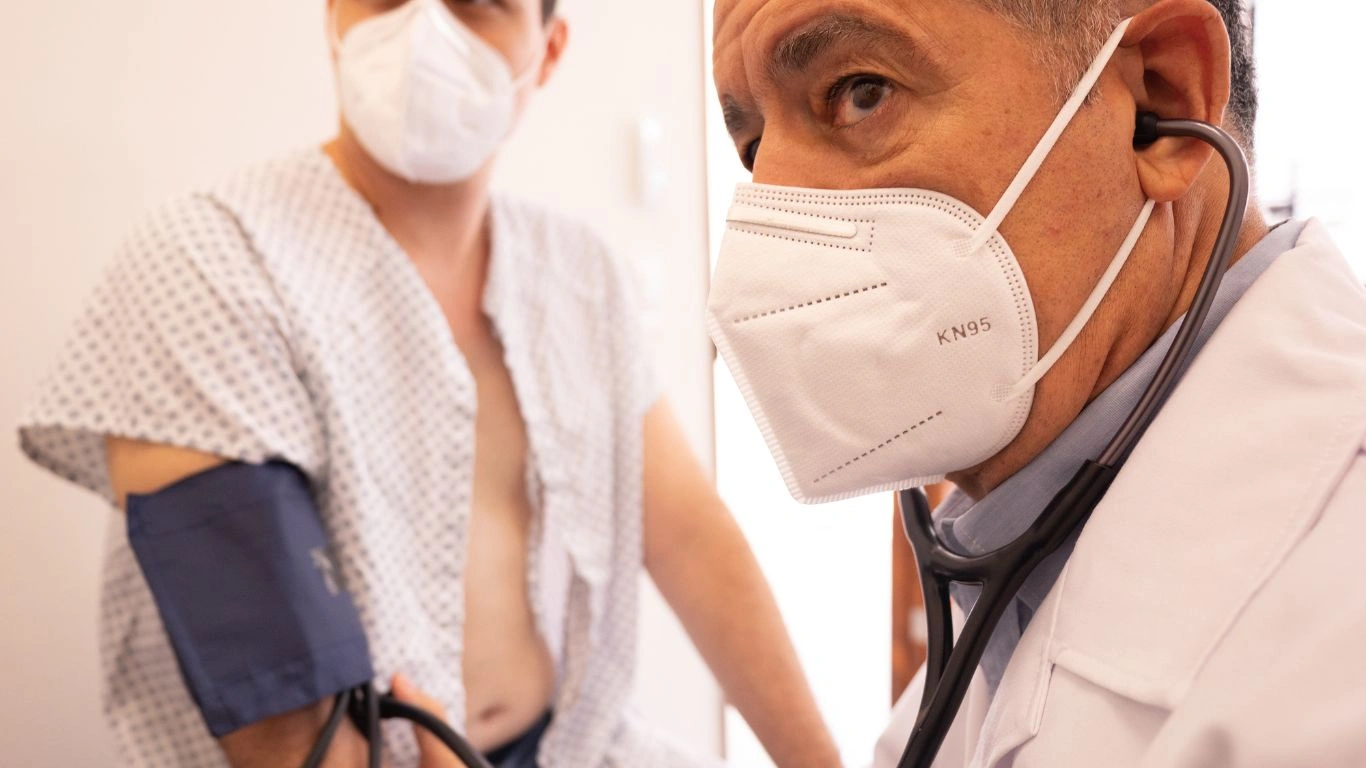Flaxseeds & Blood Pressure: A Natural Superfood for Hypertension Relief
High blood pressure, also known as hypertension, is one of the sneakiest health conditions out there. You don’t feel it creeping up, but before you know it, your numbers are soaring, and your doctor is giving you “the talk” about lifestyle changes. I’ve been in the field of hypertension for years, helping patients regain control of their blood pressure without feeling overwhelmed. One powerful, natural ally that often gets overlooked? Flaxseeds. Yes, those tiny little seeds pack a serious punch when it comes to heart health. Today, we’re diving into the role of flaxseeds in lowering blood pressure—why they work, how to use them, and what science says about their benefits.
Why Flaxseeds Deserve a Spot in Your Diet

When it comes to heart-healthy foods, flaxseeds aren’t as famous as oats or avocados, but they should be. These tiny, nutty-flavored seeds are loaded with nutrients that actively support cardiovascular health. From my experience working with hypertensive patients, I’ve seen some incredible results when they incorporate flaxseeds into their diet. But what makes them so special?
- Rich in Omega-3s: Flaxseeds contain alpha-linolenic acid (ALA), a plant-based omega-3 fatty acid known for its heart-protective benefits.
- High in Lignans: These are plant compounds with antioxidant and estrogen-like properties, which contribute to lower blood pressure and improved arterial function.
- Loaded with Fiber: A fiber-rich diet helps regulate cholesterol levels, reduce inflammation, and keep blood pressure in check.
With these benefits, it’s no surprise that researchers are uncovering more evidence of how flaxseeds can be a game-changer for people with hypertension.
Scientific Evidence: Can Flaxseeds Really Lower Blood Pressure?

Now, I know what you’re thinking—does the science really back this up? Absolutely. Multiple studies have confirmed the positive impact of flaxseeds on blood pressure. One of the most well-known studies, published in the Hypertension Journal, followed participants who consumed flaxseeds daily for six months. The results? A significant drop in both systolic and diastolic blood pressure.
Key Findings from Research:
- In a 2013 study, participants who consumed 30g of ground flaxseeds daily experienced a drop of 10 mmHg in systolic and 7 mmHg in diastolic blood pressure.
- Flaxseed consumption improved arterial stiffness, making it easier for blood to flow.
- The effect was even more pronounced in those with hypertension—a huge win for people looking for natural ways to lower their numbers.
From what I’ve observed in my own practice, adding flaxseeds to a balanced diet—especially in individuals already dealing with high blood pressure—can make a noticeable difference over time.
How Flaxseeds Help Regulate Blood Pressure

So, what’s the mechanism behind flaxseeds’ blood-pressure-lowering powers? It’s a combination of factors working together:
- Omega-3 Fatty Acids: Reduce inflammation and promote heart health by improving blood vessel function.
- Lignans: These compounds act as natural blood pressure regulators, reducing oxidative stress in blood vessels.
- Fiber: Helps maintain steady blood sugar levels, reducing spikes in insulin that can lead to hypertension.
- Potassium: Flaxseeds contain a good amount of potassium, which helps balance sodium levels and prevent fluid retention.
All these elements come together to support a healthier cardiovascular system, making flaxseeds a simple yet powerful addition to your diet.
How to Incorporate Flaxseeds Into Your Daily Routine

Alright, so we know flaxseeds are amazing for blood pressure. But how do you actually eat them? This is where many of my patients get stuck. They hear about flaxseeds, get excited, buy a bag, and then… it just sits in their pantry. Trust me, I get it! Flaxseeds aren’t exactly something you can munch on like almonds or sprinkle on everything like salt. But don’t worry—I’ve got you covered with simple, no-fuss ways to make flaxseeds a staple in your diet.
Ground vs. Whole: Which is Better?
First, a quick but crucial tip: Always opt for ground flaxseeds (also called flaxseed meal). Whole flaxseeds pass through the digestive system mostly intact, meaning you miss out on their powerful nutrients. Grinding them makes the omega-3s, lignans, and fiber more accessible to your body.
Easy Ways to Eat Flaxseeds:
- Blend into smoothies: Add 1-2 tablespoons to your favorite smoothie for an instant nutrition boost.
- Stir into oatmeal or yogurt: The nutty flavor pairs perfectly with warm oats or a bowl of Greek yogurt.
- Mix into baked goods: Swap out a bit of flour in muffins, pancakes, or bread recipes.
- Use as an egg substitute: Mix 1 tablespoon of ground flaxseeds with 3 tablespoons of water for a vegan-friendly egg replacement.
- Sprinkle over salads or soups: A light dusting of flaxseeds on a salad or soup can add texture and nutrition.
One of my personal favorites? Flaxseed overnight oats. Just mix rolled oats, almond milk, a tablespoon of ground flaxseeds, and some berries—let it sit overnight, and voilà! A heart-healthy breakfast without any morning effort.
Potential Side Effects and Precautions

Flaxseeds are generally safe for most people, but as with anything, moderation is key. I always remind my patients to start slow—especially if they’re not used to a high-fiber diet. Too much too soon can lead to bloating or digestive discomfort.
Things to Keep in Mind:
- Hydration is crucial: Since flaxseeds are rich in fiber, they absorb water. Not drinking enough fluids can lead to constipation.
- Watch your portion size: Stick to around 1-2 tablespoons a day. More isn’t always better!
- Medication interactions: Flaxseeds can interact with blood thinners or blood pressure medications. If you’re on prescription meds, consult your doctor before making flaxseeds a daily habit.
- Allergies and sensitivities: Rare, but possible. If you experience any allergic reactions, discontinue use immediately.
From what I’ve seen, most people tolerate flaxseeds well and experience noticeable benefits within a few weeks of regular consumption.
What to Expect When Adding Flaxseeds to Your Diet
One of the questions I get asked the most: How long before I see results? The answer? It depends on the individual, but in studies, blood pressure reductions were seen in as little as three to six months with consistent daily intake.
Some Positive Changes You May Notice:
- Lower blood pressure: If you’re tracking your numbers at home, you may see gradual improvements.
- Better digestion: Thanks to the fiber, expect smoother digestion and improved gut health.
- More stable energy levels: Balanced blood sugar and reduced inflammation mean fewer energy crashes.
Of course, flaxseeds alone won’t replace other healthy lifestyle choices, but they can be a powerful part of your blood pressure management toolkit.
Case Studies & Real-Life Examples

Hearing about research and clinical trials is great, but nothing compares to real-life success stories. Over the years, I’ve had many patients incorporate flaxseeds into their diet, and their results have been nothing short of inspiring.
Case Study #1: Mark’s Journey to Lower Blood Pressure
Mark, a 52-year-old software engineer, had been battling hypertension for nearly a decade. Despite being on medication, his blood pressure remained borderline high. Frustrated, he wanted to explore natural ways to manage it better. After discussing it with me, he started adding one tablespoon of ground flaxseeds to his morning oatmeal daily.
Within three months, his systolic blood pressure had dropped from 142 mmHg to 128 mmHg, and his diastolic from 90 mmHg to 80 mmHg. His doctor even reduced his medication dosage. Mark was thrilled—not only did he feel healthier, but he also enjoyed the added benefits of improved digestion and steady energy levels.
Case Study #2: Sarah’s Holistic Approach
Sarah, a 38-year-old yoga instructor, wanted to prevent high blood pressure since it ran in her family. She wasn’t keen on taking supplements but loved natural, whole-food solutions. She started sprinkling flaxseeds into her smoothies and soups while maintaining an active lifestyle.
Her blood pressure stayed consistently in the optimal range, despite her genetic predisposition. She swears by her daily flaxseed routine, calling it her “secret weapon” for heart health.
Key Takeaways: What You Need to Remember
By now, we’ve covered the role of flaxseeds in lowering blood pressure in detail. To sum it up, here are the most important things to keep in mind:
- Flaxseeds are rich in omega-3s, fiber, and lignans, all of which contribute to lower blood pressure.
- Scientific studies back their effectiveness, with noticeable reductions in blood pressure in just a few months of regular consumption.
- Ground flaxseeds work best—whole flaxseeds often pass through the body undigested.
- Start with 1-2 tablespoons per day and incorporate them into your meals gradually.
- Consistency is key: The benefits build up over time, so make flaxseeds a daily habit.
FAQs
1. How long does it take for flaxseeds to lower blood pressure?
Most studies show significant improvements within 3 to 6 months of daily consumption. However, some people may notice changes sooner, depending on their overall diet and lifestyle.
2. Can I take flaxseed oil instead?
Flaxseed oil contains omega-3s, but it lacks the fiber and lignans found in whole or ground flaxseeds. If you’re specifically looking to lower blood pressure, ground flaxseeds are the better option.
3. Are there any side effects?
For most people, flaxseeds are safe. However, consuming too much too quickly can cause bloating or digestive discomfort. Always drink plenty of water when increasing fiber intake.
4. Can pregnant women eat flaxseeds?
Yes, but in moderation. Flaxseeds contain phytoestrogens, which may impact hormone levels. If pregnant, consult your doctor before adding large amounts to your diet.
Bonus: Additional Resources or DIY Tips
Looking for more ways to integrate flaxseeds into your meals? Here are some easy DIY flaxseed recipes to try:
- Flaxseed Energy Bites: Blend ground flaxseeds, almond butter, honey, and dark chocolate chips. Roll into bite-sized balls and refrigerate.
- Flaxseed Crackers: Mix ground flaxseeds with water, salt, and seasonings. Spread thinly on a baking sheet, bake, and enjoy as crunchy, fiber-rich snacks.
- Flaxseed Salad Dressing: Whisk together olive oil, balsamic vinegar, Dijon mustard, and a teaspoon of ground flaxseeds for a heart-healthy dressing.
Appendix: References, Disclaimer, and Call to Action
References:
- American Heart Association (AHA) – Flaxseeds and Cardiovascular Health
- National Institutes of Health (NIH) – Research on Flaxseeds and Hypertension
- Mayo Clinic – Dietary Approaches for Lowering Blood Pressure
Disclaimer:
This article is for informational purposes only and is not a substitute for professional medical advice. If you have high blood pressure or other health concerns, consult with your healthcare provider before making dietary changes.
Final Thoughts:
Now that you know how flaxseeds can naturally support healthy blood pressure, why not give them a try? Start small, stay consistent, and track your progress. Your heart will thank you! 😊
What’s your favorite way to eat flaxseeds? Drop a comment below—I’d love to hear your tips and experiences!

Dr. Gwenna Aazee is a board-certified Internal Medicine Physician with a special focus on hypertension management, chronic disease prevention, and patient education. With years of experience in both clinical practice and medical writing, she’s passionate about turning evidence-based medicine into accessible, actionable advice. Through her work at Healthusias.com, Dr. Aazee empowers readers to take charge of their health with confidence and clarity. Off the clock, she enjoys deep dives into nutrition research, long walks with her rescue pup, and simplifying medical jargon one article at a time.






